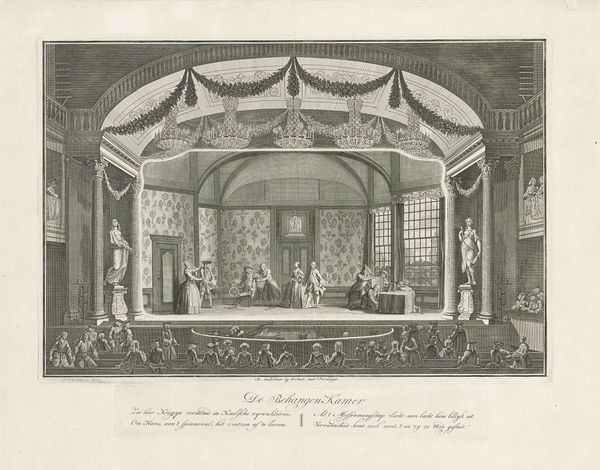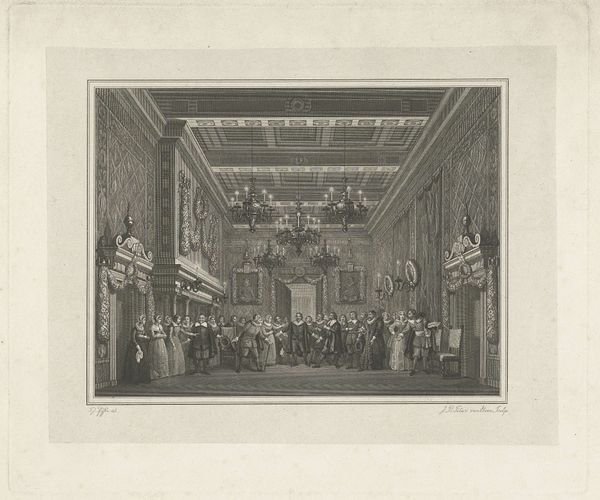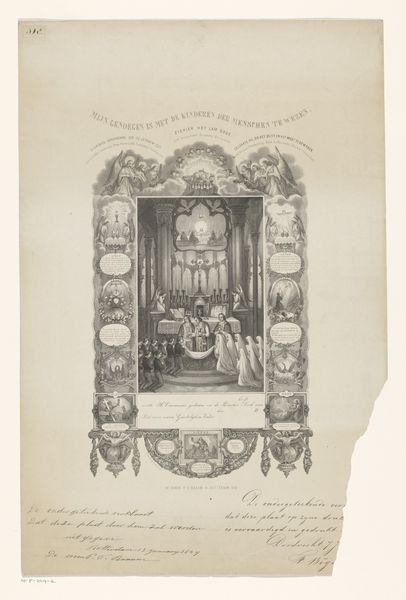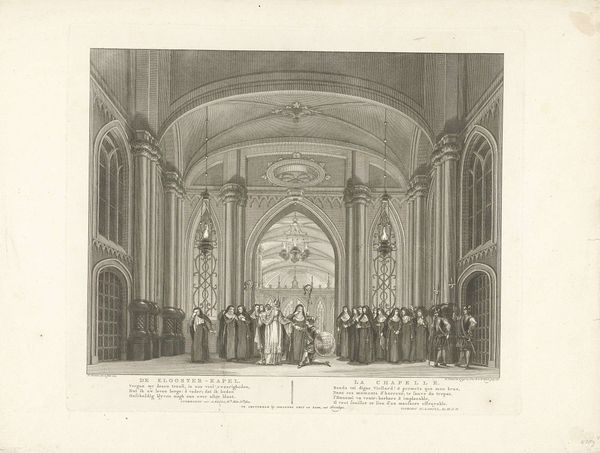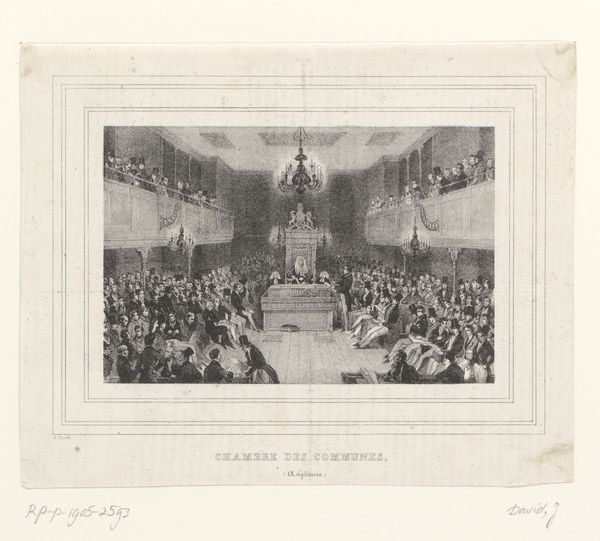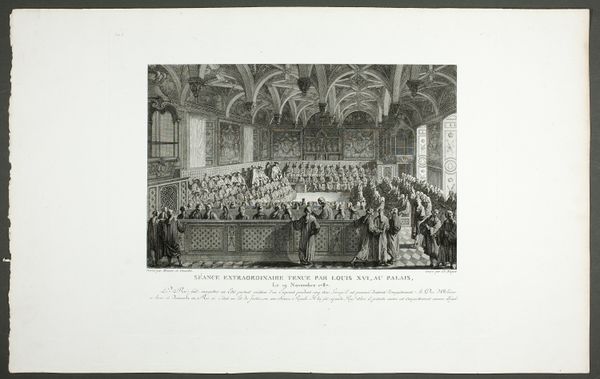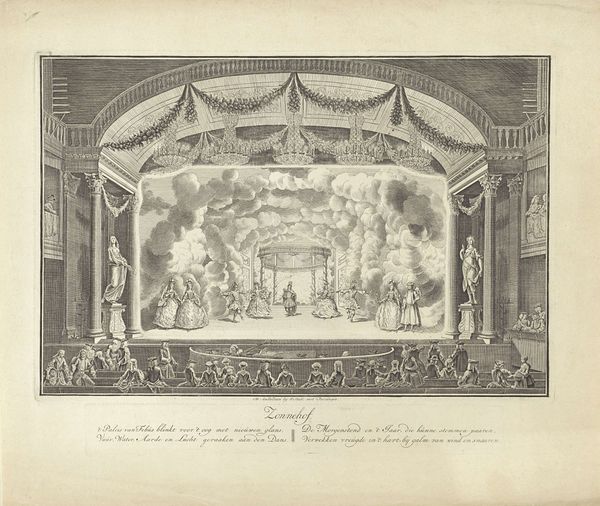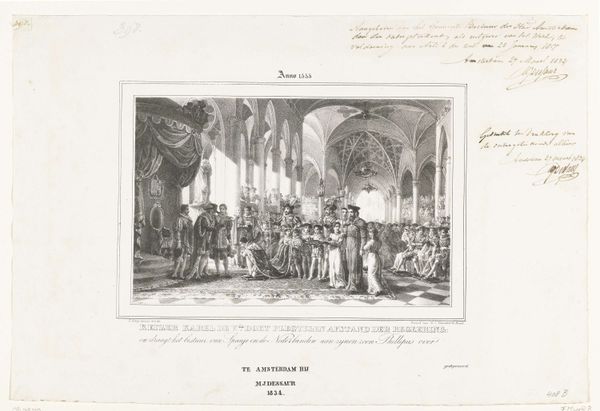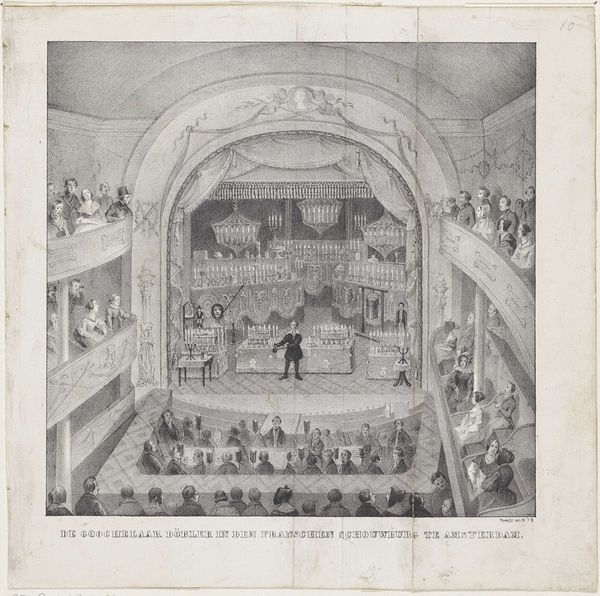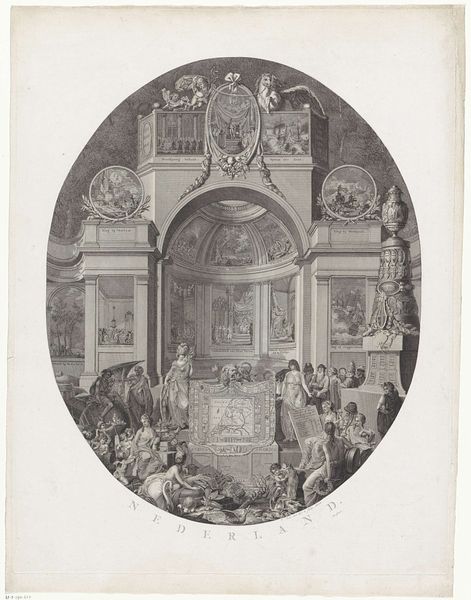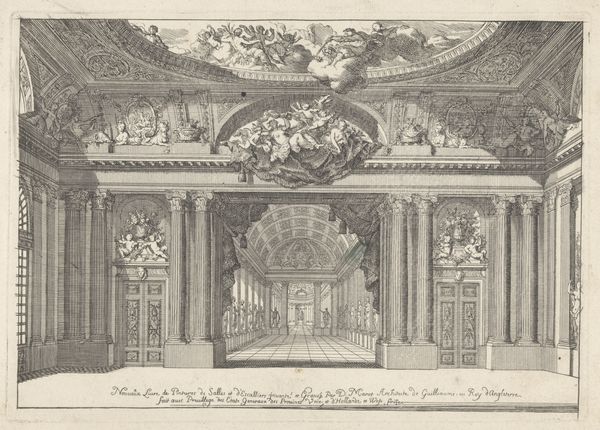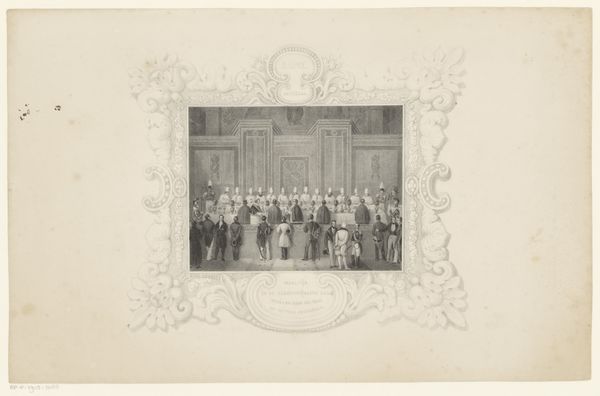
Tentoonstelling van Nationale Nijverheid van Nederland en zijne Overzeesche Bezittingen. 1852 1852
0:00
0:00
graphic-art, print, engraving
#
graphic-art
#
aged paper
#
16_19th-century
#
dutch-golden-age
#
parchment
# print
#
old engraving style
#
personal sketchbook
#
pen and pencil
#
pen work
#
history-painting
#
golden font
#
engraving
#
realism
#
intricate and detailed
#
historical font
#
columned text
Dimensions: height 545 mm, width 718 mm
Copyright: Rijks Museum: Open Domain
Curator: This print, titled "Tentoonstelling van Nationale Nijverheid van Nederland en zijne Overzeesche Bezittingen. 1852," captures a moment in Dutch history. Jan Hendrik Heymans created it in 1852 using engraving techniques. Editor: My first thought is how rigidly structured and intensely detailed it is. It conveys a sense of organized, almost obsessive documentation of… something. Curator: Indeed, this engraving presents a panorama of the 1852 Exhibition of Dutch Industry, complete with meticulous details of the displays and visitors. Look at how carefully each object, each figure, is rendered! This reflects a desire to catalogue the burgeoning industrial landscape. Editor: It's striking how the print’s very existence as a manufactured object mirrors the industrial products it depicts. Engravings are reproducible, democratizing images – much like the exhibition itself sought to promote national products to a wider audience. Consider the economic motivations, the intended markets... Curator: Absolutely! The imagery points us towards national identity and progress. The prominent placement of the Dutch coat of arms symbolizes national pride and unity through industry. The columns and architectural details also suggest an ordered, civilizing effect of industrial advancements. Editor: Yet, the inclusion of "Overzeesche Bezittingen"—overseas territories—reveals a complex story. The exhibition served as a celebration of colonial extraction as much as of local ingenuity. What materials are highlighted, and from where? This exhibition becomes a symbol of both progress and colonial exploitation. Curator: The print frames progress within the legacy of its colonial possessions. The images chosen act as representations of cultural continuity of trade and expansion. Notice how even the ornamental frame displays various forms of production and industry, signaling progress. Editor: Right, it’s not merely a neutral recording but an active participant in constructing national narratives, shaping consumption, and promoting the vision of Dutch enterprise. The act of making this print becomes tied to a larger material reality, deeply rooted in 19th-century trade, labor, and resource extraction. Curator: A complex image—a beautiful, carefully constructed engraving inextricably linked to the socio-economic and cultural narrative it depicts. Editor: Yes, the tension between artistry and industrial promotion, coupled with the undercurrent of colonialism, reveals layers of meaning that resonate to this day.
Comments
No comments
Be the first to comment and join the conversation on the ultimate creative platform.
